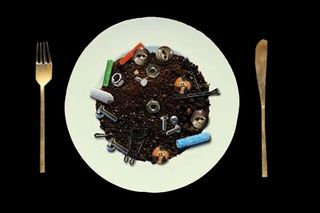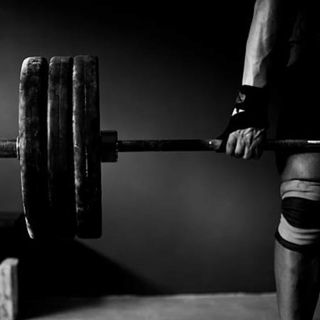
Why Do People Eat Chalk, Dirt, and Other Things Not Fit to Consume?
Craving non-food items is a temporary eating disorder called pica, which primarily affects children and pregnant women.

A Ugandan woman, Brenda Naggita, likes to eat rocks while she’s pregnant and claims it helps her with nausea, reported the BBC.
The doctors diagnosed her with pica, a eating disorder that occurs most often in children and pregnant women and is typically temporary. The National Eating Disorders Association (NEDA) has defined this condition as an, “eating disorder that involves eating items that are not typically thought of as food and that do not contain a significant nutritional value such as hair, dirt, and paint chips.”
In children and pregnant women, pica may not last long, but in people with intellectual disabilities, the condition can be severe and long-lasting, according to NEDA. But even when pica is temporary, early treatment can help avoid potentially serious side effects, the NEDA states.
What are people most likely to eat if they have pica?
Healthline states people who have pica may like eating items such as ice, soap, buttons, clay, hair, dirt, sand, the unused remainder of a cigarette, cigarette ashes, paint, glue, chalk, or feces.
At what point is pica diagnosable?
As per NEDA, those who have pica are in the habit of eating non-food items — of no nutritional value — regularly. However, for them to be diagnosed with pica, their habit must continue for at least a month.
What causes pica?
Pica doesn’t have a single underlying cause. Healthline attributes it to a range of reasons. For instance, pica might either be the result of a deficiency, such as of iron, zinc, or any other nutrient. For instance, in pregnant women, anemia caused by an iron deficiency may be the reason why some develop pica; unusual cravings may be a sign that the body is trying to replace or replenish low levels of nutrients in the body.
For people with mental health problems or intellectual disabilities, the NEDA says pica is often a coping mechanism. And other people may take to eating certain non-food items because of their texture or flavor — for instance, clay or chalk. People who are dieting may also develop pica since eating or chewing on non-food items may give them the feeling of eating or fullness.
Is there a test to diagnose pica?
No. A doctor will be able to diagnose pica based on the patient’s historical relationship with non-food items. Based on this, doctors may conduct tests to assess a patient’s levels of minerals and nutrients, which can help doctors identify why the person has taken to eating non-food items.
Related on The Swaddle:
Early Warning Signs Can Help Detect Eating Disorders
What are the health risks associated with pica?
A pica patient might develop several complications as a result of eating non-food items. For instance, eating paint chips can cause lead poisoning. Or bacteria or parasites from ingesting dirt or other inedible objects can lead to other serious infections that damage the kidneys or liver. Eating objects that can’t be digested, for example, stones or soap, may also cause constipation or blockages in the intestines. More seriously, ingesting sharp objects can cause tears in the lining of the esophagus or intestines. And lastly, eating non-food items will at least end up interfering with the intake of healthy food, leading to more nutritional deficiencies.
Can pica be treated?
Pica may not always go away; for people with intellectual disabilities especially, it may be lasting. In children and pregnant women, however, pica often goes away in a few months without treatment, according to Healthline.
In cases that need treatment, as the first step, the doctor will first probably assess any complications that may have occurred a result of eating non-food items — for example, lead poisoning, choking or internal blockage — and treat it accordingly.
If patients don’t suffer from any of these complications, the doctor might just test them for nutritional deficiencies or imbalances and prescribe vitamin or mineral supplements, for instance, iron and zinc tablets if they have anemia.
“Your doctor may also order a psychological evaluation to determine if you have OCD or another mental health condition. Depending on your diagnosis, they may prescribe medications, therapy, or both,” reports Healthline. “If a person with pica has an intellectual disability or mental health condition, medications for managing behavioral problems may also help reduce or eliminate their desire to eat nonnutritive items.”
Anubhuti Matta is an associate editor with The Swaddle. When not at work, she's busy pursuing kathak, reading books on and by women in the Middle East or making dresses out of Indian prints.
Related


Can Cannabis Products Help Mental Health Disorders? Evidence Is Inconclusive, Review Finds
